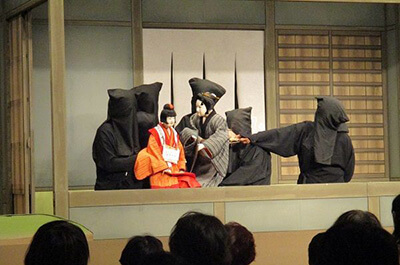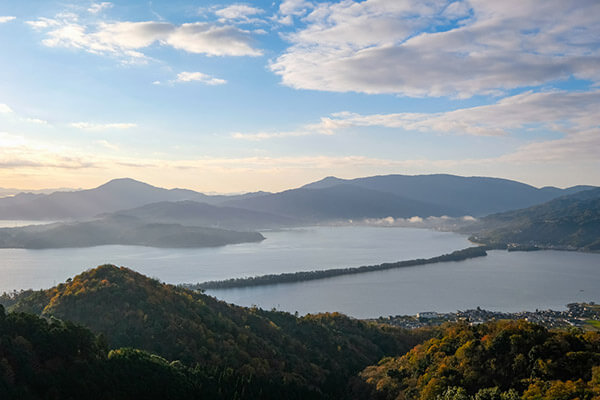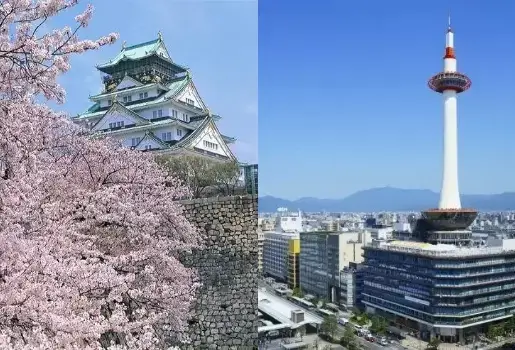STORY

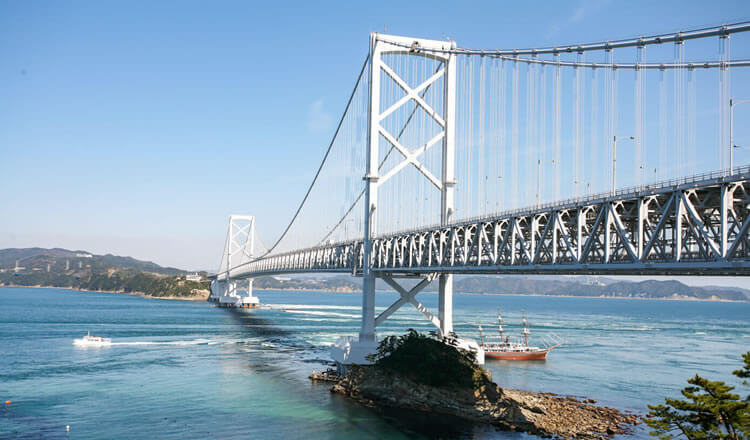
Two impressive bridges connect a dynamic route featuring stunning seascapes, views, myths, traditional art, and much, much more!
During the 8th century, when an Islamic empire spread from Central Asia, Egypt to North Africa, Japan's oldest history books Kojiki (Records of Ancient Matters) and Nihon Shoki (The Chronicles of Japan) were compiled. According to these, a celestial married couple, Izanagi and Izanami, stirred a swamp from heaven with a huge spear. A single drop from this spear fell and hardened into an island, and that first island created was Awaji-shima. Following this, the creation of other islands followed to form the archipelago of Japan, firmly cementing the myth behind the birth of the country.
There is a route connecting Kobe/Akashi on the main island of Honshu and Tokushima on Shikoku Island, with legendary Awaji-shima at the center. It runs through areas with not only extraordinary panoramic views of the sea, but also a wide range of both traditional and modern features. Awaji-shima is the largest island in the Seto Inland Sea, and is connected to Hyogo Prefecture on the mainland by the world's longest suspension bridge (3,911 m), The Akashi Kaikyo Bridge, and then with Naruto City of Tokushima Prefecture by The Onaruto Bridge over the Naruto Strait.
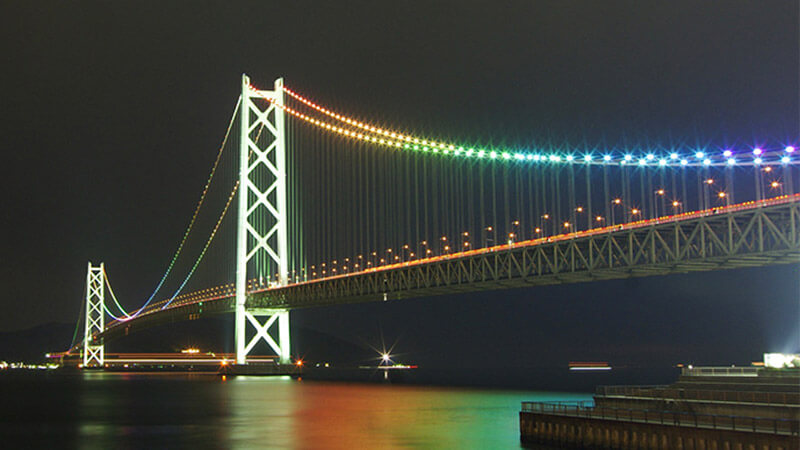
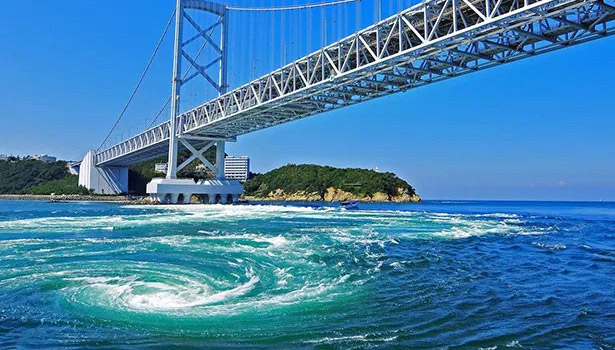
The Akashi Kaikyo Bridge offers a tour for visitors (reservation required) to enjoy an amazing panoramic view from a height of 300 meters. Further on, from the Onaruto Bridge, one can see dynamic whirlpools below, which resemble typhoon clouds. As the times of the high tides and low tides are completely opposite between the northern area (the Seto Inland Sea) and the southern area (the Pacific Ocean), the difference in the water level between these areas creates extremely rough currents, creating this extraordinary "art of nature." The size of a whirlpool here can be up to 30 meters in diameter, which makes it one of the three major tidal anomalies in the world, alongside the Strait of Messina (Italy) and the Seymour Narrows (the U.S.). Perhaps, these whirlpools of Naruto were created by Izanagi and Izanami with their very first stir.
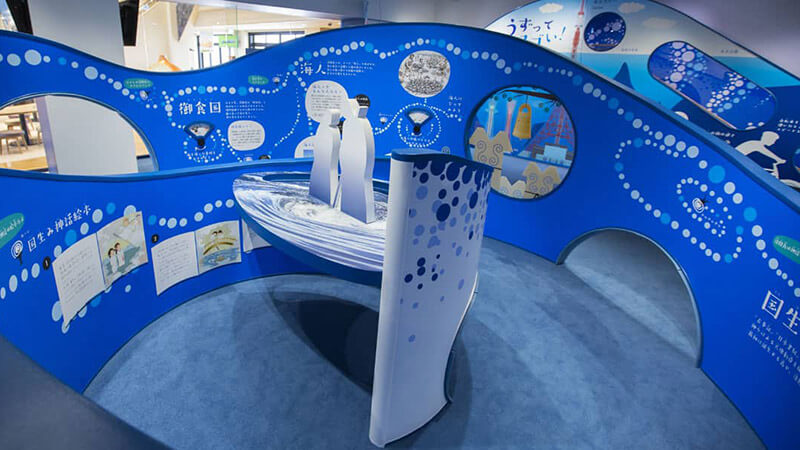
Blessed with a mild climate, Awaji-shima is known as "the island of flowers and greenery" for the consistent display and variety of beautiful flowers it offers all year round. One of its most prominent attractions is Hyogo Prefectural Awaji Hanasajiki Park located on the northern part of the island, with its an enormous hilly field covered by a carpet of seasonal flowers. The vast array of vivid colors exhibited here contrast exquisitely with the deep blue water of Osaka Bay and the Akashi Strait behind it. The island can also boast a number of other beautiful spots for viewing flora, such as the Awaji Yumebutai resort and the Akashi Kaikyo National Government Park.
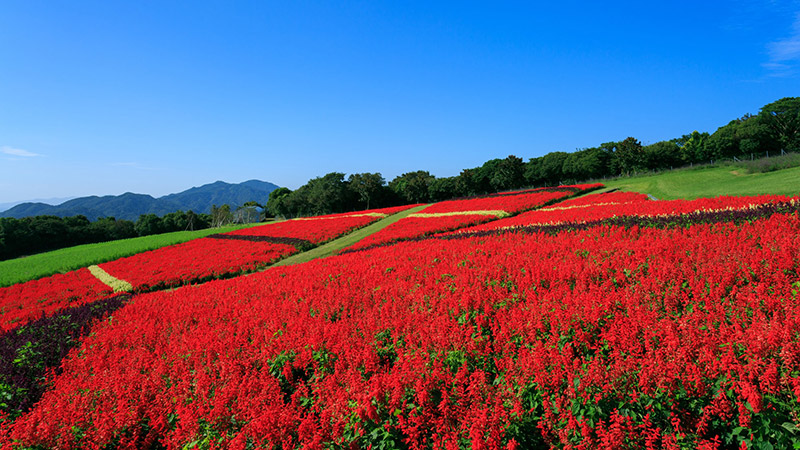
At the center of the island sits Japan's oldest shrine, Izanagi-jingu, which can lay claim to enshrining Izanagi and Izanami. It is believed that it was here Izanagi spent his later years after creating the country and other gods. From this point on, after driving up a hill, you can find Onokorojima Shrine, which is, according to legend, the exact spot where the country was created by Izanagi and Izanami. This shrine is now known as the best place for finding luck in love due to the presence of these married gods.
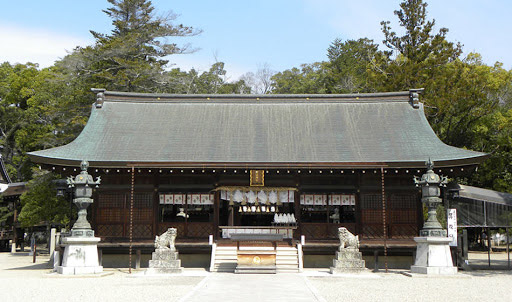
Awaji Island is also known as the top onion producer in Japan. This vegetable had once been very unpopular in Japan, due to its strong smell. However, during the early Meiji Era, a rumor spread that it could be used to cure cholera amidst an epidemic of that disease in the Kansai region, and thereafter its popularity grew. Onions grown in the southern part of the island have a high sugar level, which is 1.4 times that of more general varieties, due to the quality of the soil which contains sand from the Izumi Sandstone Belt that runs up to Kagawa Prefecture in Shikoku. This island is also the ideal location for a fishing industry because of the rapid currents created by the two straits surrounding the island. The firm flesh of Akashi red seabream and flavorsome Naruto seaweed are especially beloved by the locals.
The Mihara district in the southern part of the island is especially well known for the 500- year-old Awaji Ningyo Joruri. Ningyo joruri is a kind of traditional puppet show, and was one of the most popular forms of theatrical entertainment, along with kabuki, during the Edo Era. One puppet is operated by three puppeteers, with the collaboration of a narrator (tayu) and a shamisen (string instrument) player. Currently, traditional performances are shown daily at Awaji Ningyo-za, with a popular backstage tour of the theater another fun attraction.
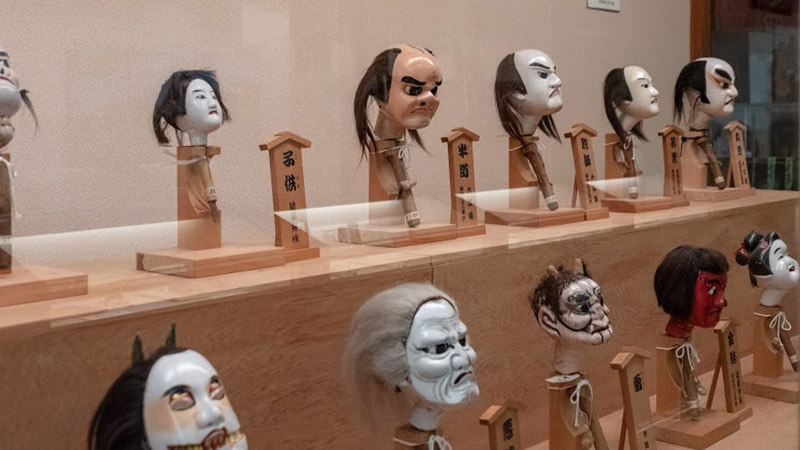
The "Awa" part in the name of Awaji-shima was originally taken from Awa (the former name of Tokushima), and these two areas share some common cultural features, including ningyo joruri, which crossed over the sea from Awaji to Awa, for the entertainment of farmers who developed it into Awa Ningyo Joruri. As this version was often conducted outdoors, rather than in theaters, the dolls are bigger and their actions are more expansive than those from other areas. These days, shows can be seen at Tokushima Prefectural Awa Jurobe Yashiki.
Another famous art form from Tokushima is the Awa Dance, which is believed to have been started by the locals to celebrate the opening of Tokushima Castle 400 years ago. Men often wear hand towels on their heads to hide their faces, because back in the day samurai warriors were forbidden to attend public celebrations so had to dance with their faces covered. The dance music, with a distinctive rhythm, is played on all sorts of instruments, including shamisen, flutes, bells and drums, accompanied by the dancers' chants of "Dancers and spectators, you are both stupid. So if you are stupid, just go out and dance anyway." This dance festival, the largest of its kind in Japan, is held in mid-August every year in Tokushima City, and involves as many as 100,000 dancers and over a million spectators. It has turned into a truly global event, collaborating with other dance festivals around the world, including the Rio Carnival of Brazil.
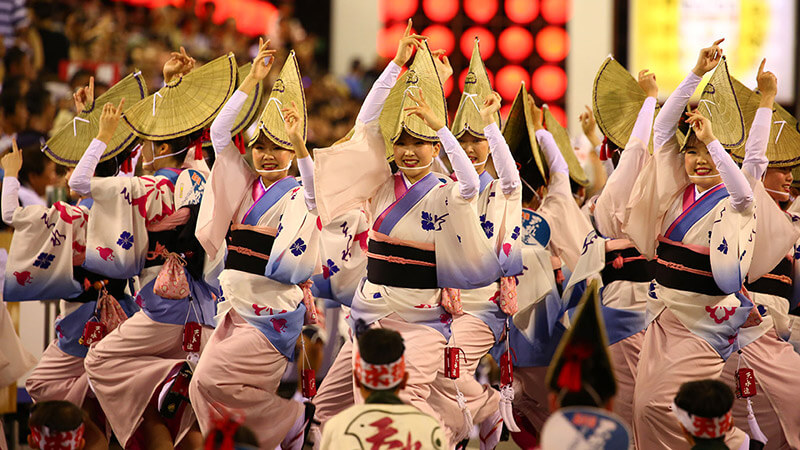
The Shikoku 88 Temple Pilgrimage also became popular among common people during the Edo Era. Pilgrims visit all the 88 temples, where the legendary priest Kobo Daishi (or Kukai) from Sanuki (present Kagawa) trained, to be freed of earthly desires and make their wishes come true. The first temple on the route is Ryozenji Temple in Tokushima City, and this is the starting point for the entire journey of 1,460 kilometers.
Tokushima's specialty food is supplied by a breed of chicken developed by Tokushima Prefecture, which has a quite distinct feathery tail. It is named AWA•O•DORI from the Japanese words for "Awa Dance (Awa Odori)" and "tail + bird (o + dori)." It has earned a great reputation for its flavorful taste, and is well known by the locals as their home brand of chicken.
To sum up, these areas can boast a number of special attractions along the route that connects the mainland and Shikoku Island via Awaji Island. Why don't you treat yourself to a wonderful experience that combines the beauty of nature and a truly unique culture?
